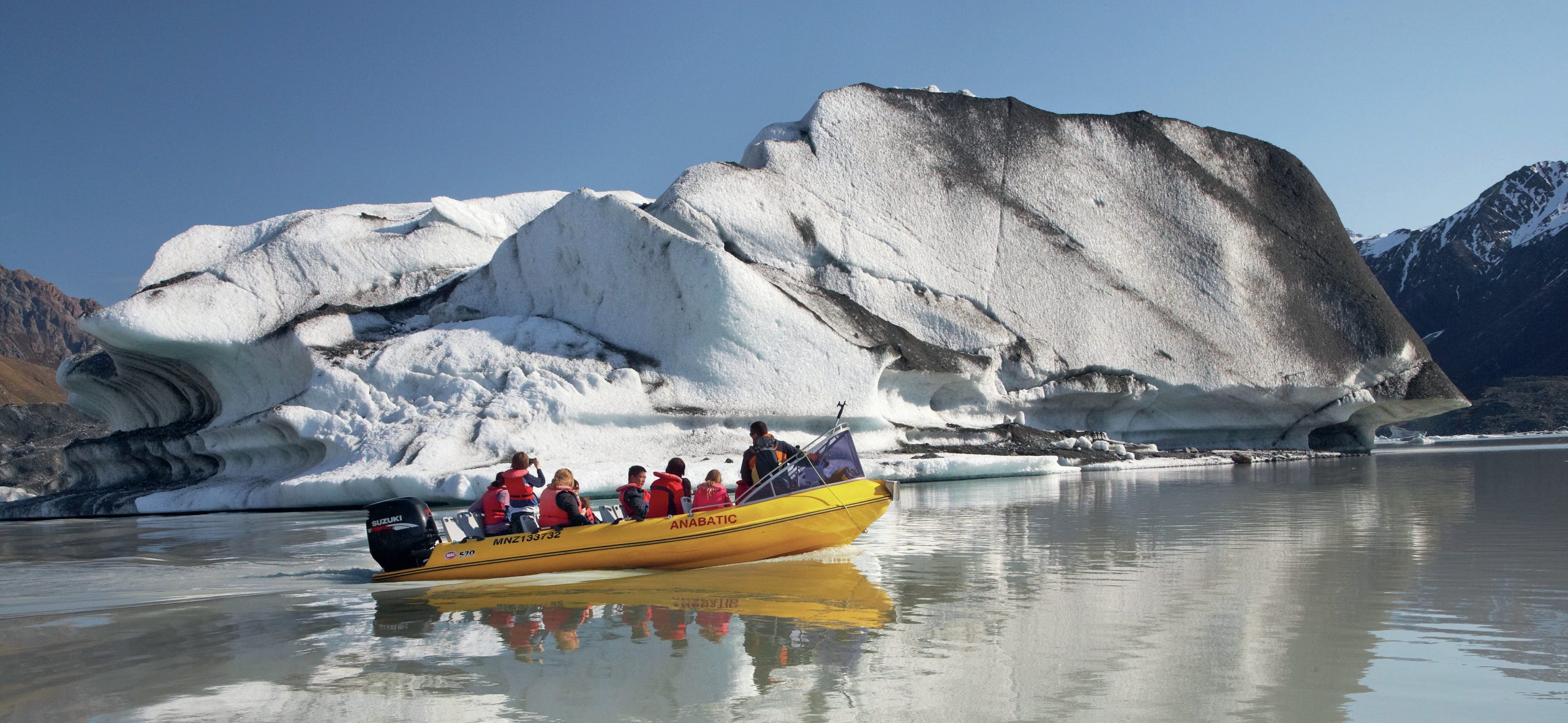
Tasman Lake in New Zealand is a glacial lake which did not even exist 50 years ago. In the 1970s, puddles started to form at the foot of the Tasman glacier as it retreated. As time passed these puddles merged to become a small lake, which gradually became deeper and longer and is now about 8 km long, 2 km wide and 200 m deep. Every year Tasman Lake grows by about 800 m and scientists expect that the Tasman glacier, and all the other glaciers in New Zealand, will completely disappear before the end of this century.
The Aoraki/Mt Cook National Park is a spectacular area of South Island, dominated by the snow-capped peaks of Mt Cook — the highest mountain in Australasia (3,274 m) — and Mt Tasman (Figure 1). Several glaciers have developed in these high mountains and the Tasman glacier is the longest, currently about 25 km long, however climate change means that all these glaciers are melting. Their retreat has become particularly noticeable in the last 30 years and has probably accelerated in the last 10 years.
Your organisation does not have access to this article.
Sign up today to give your students the edge they need to achieve their best grades with subject expertise
Subscribe




